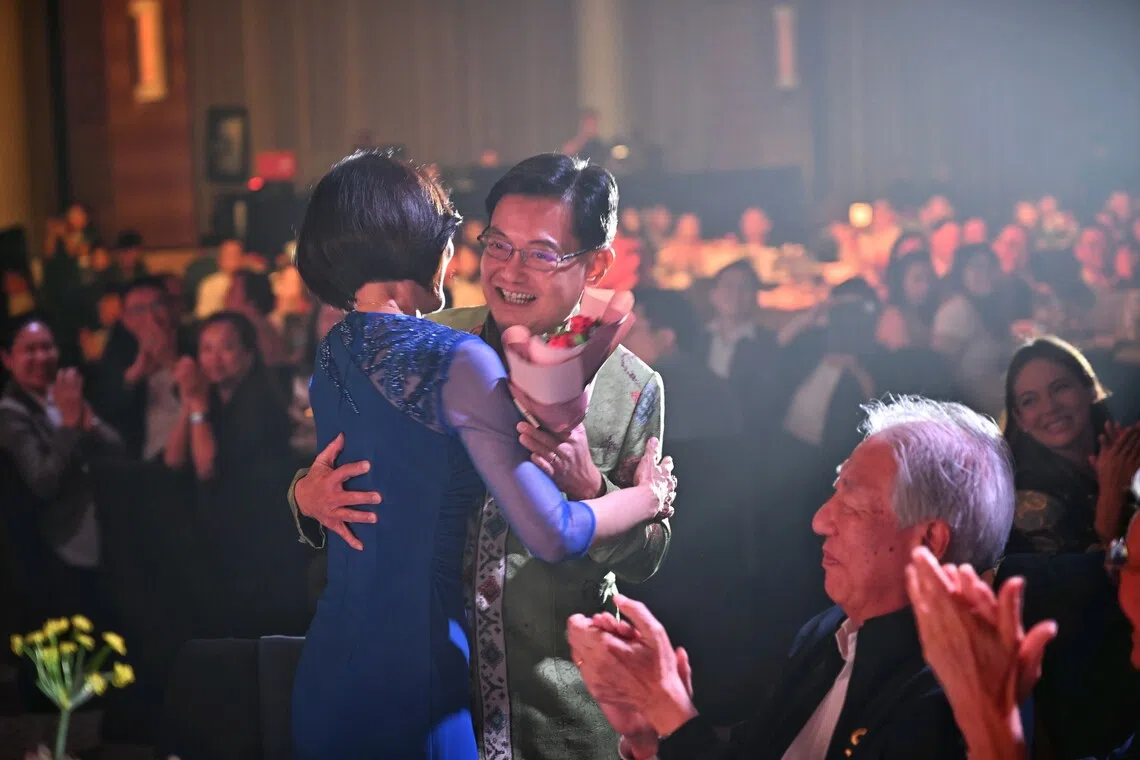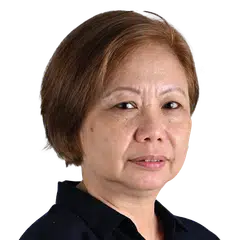Ex-DPM Heng Swee Keat and other stroke survivors pay tribute to caregivers
Sign up now: Get ST's newsletters delivered to your inbox

Former deputy prime minister Heng Swee Keat presenting his wife, Madam Chang Hwee Nee, with a bouquet of red roses at the end of his tribute.
ST PHOTO: ARIFFIN JAMAR
Follow topic:
- Heng Swee Keat, former Deputy PM, honoured his wife, Chang Hwee Nee, for her unwavering support during his stroke recovery in 2016.
- Chang Hwee Nee made critical decisions during his treatment and provided constant care, which Heng said was essential for his survival.
- Stroke survivors and caregivers were also recognised, highlighting the importance of support systems in recovery from strokes.
AI generated
SINGAPORE – In a collage of photos, former deputy prime minister Heng Swee Keat, 64, paid a surprise tribute to his wife, Madam Chang Hwee Nee, for standing by him when he was recovering from stroke.
He was speaking at the Stroke Support Station’s (S3) 10th Anniversary Gala – A Decade of Stroke Care, held at The Ritz-Carlton, Millenia Singapore on Oct 23.
Mr Heng suffered a stroke
He underwent neurosurgery to relieve pressure in his brain due to the bleeding and the aneurysm was successfully closed. He was hospitalised for more than six weeks.
Madam Chang was his primary caregiver.
Mr Heng, who retired from office in May, has since fully recovered.
In the tribute to his 62-year-old wife, who is the chairman of S3, Mr Heng said Madam Chang was the rock who made the call for doctors to “carry out the procedures to save my life”.
“Without her approval, I would not be here today,” he told dinner attendees.
He said it was harrowing for her as she did not know if he would fully recover, be able to speak, walk, eat or even write.
“Despite that, she was by my side every day and every night. When I opened my eyes, I could see her crying,” he said, adding that she was very encouraging during his recovery.
“Today, she has a deep understanding of the fear and anxiety that caregivers of stroke survivors go through that she is able to (lead) S3 to give support not only to stroke survivors but also to their caregivers,” he said.
At the end of his tribute, Mr Heng presented her with a bouquet of red roses, and the couple shared a kiss.
This was not the first time Mr Heng honoured his wife for helping him during his recovery.
In March 2020, he thanked her in his posts both on Facebook and Instagram as a celebration of International Women’s Day
Posting a picture of him and his wife forming a heart shape with their fingers, he called her “my pillar of strength and support”.
“Together with her by my side, we have brought up our two children, and she showered me with the best care after my stroke, helping to nurse me back to full recovery in 2016. She is my #SuperSHEro,” he wrote.
A stroke happens when a part of the brain is damaged due to interruption of its blood supply. The symptoms and signs of a stroke depend on the size and location of the damaged area.
There are two main types of stroke – ischaemic, caused by a blockage in a blood vessel to the brain; and haemorrhagic, caused by bleeding from a ruptured blood vessel in the brain.
Other stroke survivors, including comedian Suhaimi Yusof


